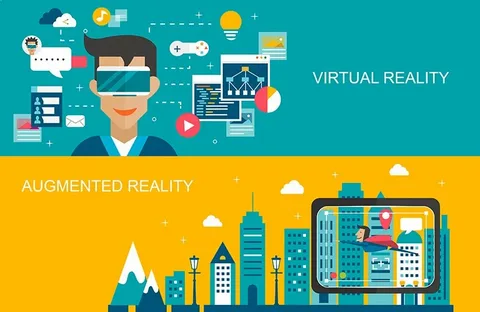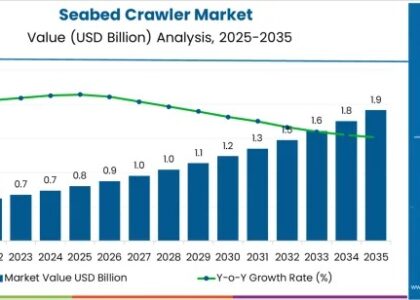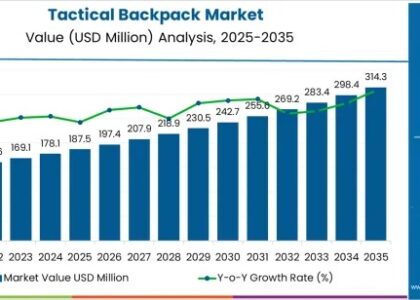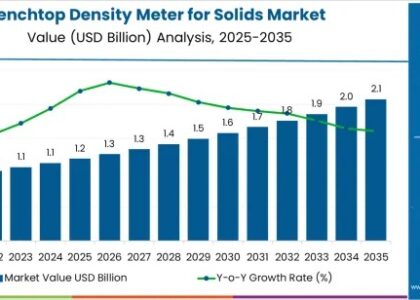The global augmented and virtual reality (AR/VR) in education market is expected to reach approximately USD 116.6 billion by 2035, expanding at a robust compound annual growth rate (CAGR) of 15.7% during the forecast period. This growth is being propelled by a rising demand for personalized and immersive learning experiences, growing adoption of AI-powered educational tools, and strong government support for the digital transformation of education. As schools, universities, and corporate training environments shift toward more interactive and inclusive methodologies, AR and VR are becoming essential tools in reshaping how learners engage with content.
Augmented and virtual reality technologies offer dynamic learning environments where complex subjects can be visualized, manipulated, and understood in 3D space. AR overlays digital content onto the real world, making abstract concepts more tangible, while VR immerses learners in simulated environments for deeper, distraction-free engagement. Whether it’s medical students performing virtual surgeries, geography students exploring historical sites, or vocational trainees simulating technical scenarios, AR/VR enhances comprehension, retention, and motivation. With increasing accessibility of mobile-based AR apps and affordable VR headsets, these technologies are rapidly penetrating mainstream classrooms and remote learning platforms.
Educational institutions are increasingly partnering with technology providers to integrate AR/VR modules into existing curriculums, supported by cloud-based learning management systems (LMS) and AI-driven analytics. The combination of immersive content and real-time feedback is proving invaluable for differentiated instruction and inclusivity, especially for students with diverse learning needs. Governments worldwide are recognizing this potential, launching initiatives to promote immersive digital education, especially in underserved or remote regions.
Get Ahead with Our Report: Request Your Sample Now!
https://www.futuremarketinsights.com/reports/sample/rep-gb-18054
Market Trends
-
Shift toward experiential learning models supported by AR/VR for improved engagement
-
Growth in gamified educational content and simulation-based assessments
-
Increasing integration with artificial intelligence to deliver adaptive learning paths
-
Development of mobile-first AR/VR applications for widespread access and deployment
-
Expansion of cloud-based VR classrooms and teacher training platforms
Driving Forces Behind Market Growth
-
Rising demand for personalized and interactive learning experiences
-
Government investments in digital learning infrastructure and inclusive education policies
-
Proliferation of edtech platforms leveraging AR/VR to enrich traditional curriculum
-
Technological advancements in wearable devices and low-cost VR headsets
-
Increased application in corporate learning, skills development, and vocational training

Challenges and Opportunities
-
High development costs and technical complexities in creating immersive educational content
-
Limited access to AR/VR hardware and high-speed internet in rural or low-income areas
-
Opportunities to bridge learning gaps for students with special needs through customized AR/VR modules
-
Growing need for teacher training and curriculum alignment with immersive technologies
-
Potential for lifelong learning programs and remote training using VR across industries
Exhaustive Market Report: A Complete Study
https://www.futuremarketinsights.com/reports/augmented-and-virtual-reality-in-education-market
Recent Industry Developments
-
Introduction of AI-powered VR tutors capable of real-time performance analysis and feedback
-
Collaborations between edtech firms and educational institutions to co-develop AR-enhanced STEM modules
-
Development of virtual laboratories for hands-on science experiments in remote learning environments
-
Launch of immersive language learning apps using speech recognition and AR prompts
-
Expansion of government-led pilot programs to deploy VR classrooms in underserved communities
Regional Analysis
-
North America: Leading the market with early adoption in K–12 and higher education institutions; significant investments in AR/VR edtech startups and corporate training
-
Europe: Strong emphasis on digital literacy and blended learning environments; increasing deployment in vocational education and lifelong learning programs
-
Asia Pacific: Fastest-growing region driven by large student populations, government-backed smart classroom initiatives, and increasing mobile connectivity in India, China, and Southeast Asia
-
Latin America: Moderate growth with rising interest in immersive learning to enhance STEM education and teacher training; expansion of digital education policies in Brazil and Mexico
-
Middle East & Africa: Emerging markets with high growth potential through smart education frameworks; adoption supported by digital transformation agendas in the UAE, Saudi Arabia, and South Africa





